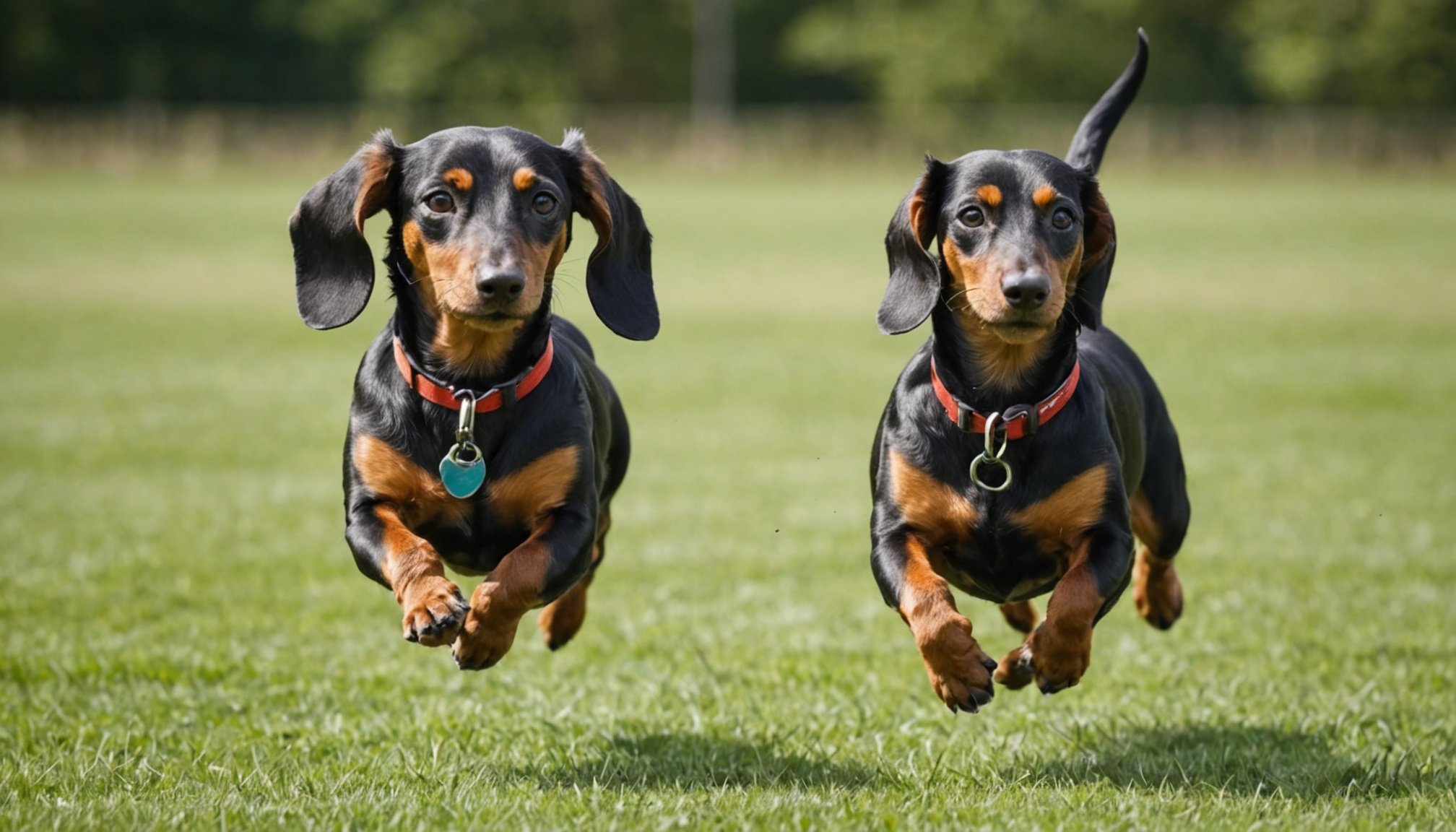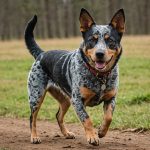Is It Safe for Dachshunds to Compete in Dog Sports Without Back Injury Risks?
When it comes to dog sports, many owners are eager to involve their pets in various activities, from agility courses to obedience training. However, for breeds like the Dachshund, the risk of back injuries is a significant concern that cannot be ignored. In this article, we will delve into the specifics of why Dachshunds are more prone to back issues, the risks associated with dog sports, and what you can do to minimize these risks and keep your Dachshund safe and healthy.
Understanding Dachshunds and Their Back Issues
Dachshunds, with their unique body shape characterized by long spines and short legs, are genetically predisposed to back problems. The most common condition affecting Dachshunds is Intervertebral Disc Disease (IVDD), a degenerative disc disease that can cause pain, mobility issues, and even paralysis in severe cases.
Avez-vous vu cela : Is It Possible to Maintain a Bee Colony in Your London Garden? A Complete Guide to Urban Beekeeping
What is IVDD?
IVDD is a condition where the spinal discs between the vertebrae degenerate or rupture, leading to nerve compression and a range of symptoms from mild pain to complete paralysis. This condition is particularly common in breeds with long backs and short legs, such as Dachshunds, Basset Hounds, Corgis, and French Bulldogs.
Risk Factors for Back Injuries in Dachshunds
Several factors contribute to the increased risk of back injuries in Dachshunds:
Dans le meme genre : Identifying Early Arthritis Symptoms in Senior Cats: A Comprehensive Guide for Pet Owners
- Genetic Predisposition: Their body shape makes them more susceptible to spinal issues.
- Obesity: Extra weight puts unnecessary strain on their long spines, exacerbating the risk of back problems.
- Lack of Exercise: While Dachshunds need regular exercise, it must be gentle and controlled to avoid straining their backs.
- Jumping and High-Impact Activities: Activities that involve jumping or high-impact movements can be particularly risky for Dachshunds.
The Risks of Dog Sports for Dachshunds
Dog sports, especially those involving agility and high-impact activities, pose significant risks for Dachshunds due to their predisposition to back injuries.
Agility Related Injuries
Agility training, which includes activities like jumping, weaving through poles, and navigating obstacles, can be particularly hazardous for Dachshunds. Here are some reasons why:
- High-Impact Jumps: Jumping over obstacles can put a lot of stress on the spine, increasing the risk of disc injury.
- Twisting and Turning: The tight turns and quick changes in direction required in agility courses can strain the back muscles and discs.
- Falls and Accidents: Even with careful training, accidents can happen, and falls can lead to serious back injuries.
Other Sports and Activities
While agility is a high-risk activity, other dog sports and activities can also pose risks if not managed carefully:
- Running and Sprinting: High-speed activities can put excessive strain on the spine.
- Jumping Onto Furniture: Activities that involve jumping onto high surfaces, such as couches or beds, can lead to back injuries if proper precautions are not taken.
Minimizing the Risk of Back Injuries in Dachshunds
While it is crucial to be aware of the risks, it is not necessary to completely exclude Dachshunds from dog sports. Here are some strategies to minimize the risk of back injuries:
Proper Conditioning and Training
- Gradual Training: Start with low-impact activities and gradually increase the intensity and complexity of the training.
- Body Awareness: Teach your Dachshund to be aware of their body position through exercises like walking through ladders and climbing onto low platforms.
Exercise and Physical Activity
- Gentle Exercise: Opt for short, frequent walks and low-impact activities like swimming.
- Avoid High-Impact Activities: Steer clear of activities that involve jumping, running, or other high-impact movements.
Weight Management
- Healthy Diet: Ensure your Dachshund is on a balanced diet with high-quality protein sources and moderate fat content.
- Portion Control: Use measuring cups to ensure accurate portions and avoid overfeeding.
Use of Supportive Products
- Supplements: Consider using supplements like glucosamine and chondroitin to support joint and disc health.
- Support Harnesses: Use products like the GingerLead Dog Sling to provide support and stability, especially for Dachshunds recovering from injuries or managing conditions like IVDD.
Practical Tips for Safe Participation in Dog Sports
If you still want to involve your Dachshund in dog sports, here are some practical tips to keep in mind:
Before Starting Any Training
- Consult Your Vet: Always consult with your veterinarian before starting any new training program, especially if your Dachshund has a history of back issues.
- Assess Your Dog’s Health: Ensure your Dachshund is at a healthy weight and does not have any pre-existing back conditions.
During Training
- Monitor Your Dog’s Behavior: Watch for signs of discomfort or pain, such as limping, whining, or reluctance to move.
- Use Proper Equipment: Use equipment designed for Dachshunds, such as ramps for furniture and supportive harnesses.
After Training
- Provide Adequate Rest: Ensure your Dachshund gets plenty of rest and recovery time after training sessions.
- Maintain a Healthy Lifestyle: Continue with a balanced diet, regular gentle exercise, and weight management to support overall health.
Real-Life Examples and Anecdotes
The Story of Henry
The founder of Under the Weather, a company that produces disc and spine health chews for dogs, was inspired by her experience with a Basset Hound mix named Henry. Despite being aware of the potential for back problems, she was not prepared for the challenges of treating IVDD. This experience led her to develop a product specifically formulated to support disc and spine health in breeds prone to these issues.
Customer Testimonials
Customers who have used products like the GingerLead Dog Sling often report positive experiences. For example, one customer mentioned, "We've been using it for almost three weeks, and it's absolutely perfect for our injured dog." Another customer noted, "The leash is easy to use, and surprisingly, Coco took to it without any coaxing. She hates clothes and likes to be able to wander on her leash.".
While Dachshunds can certainly participate in dog sports, it is crucial to do so with caution and careful planning. By understanding the risks associated with their unique body shape, taking steps to minimize these risks, and using supportive products and training methods, you can help keep your Dachshund safe and healthy.
Key Takeaways
- Genetic Predisposition: Dachshunds are prone to back issues due to their long spines and short legs.
- Proper Conditioning: Gradual and gentle training is essential.
- Weight Management: Maintaining a healthy weight is critical.
- Supportive Products: Use supplements and supportive harnesses to aid in disc and spine health.
- Consult Your Vet: Always consult with your veterinarian before starting any new training program.
By following these guidelines and being mindful of the specific needs of your Dachshund, you can enjoy dog sports while ensuring the health and safety of your canine athlete.
Detailed Bullet Point List: Tips for Minimizing Back Injury Risks in Dachshunds
-
Consult Your Veterinarian:
-
Before starting any new training program.
-
To assess your dog’s health and identify any pre-existing conditions.
-
Maintain a Healthy Weight:
-
Ensure your Dachshund is on a balanced diet with high-quality protein sources.
-
Use measuring cups to ensure accurate portions and avoid overfeeding.
-
Choose Gentle Exercises:
-
Opt for short, frequent walks.
-
Consider low-impact activities like swimming.
-
Avoid High-Impact Activities:
-
Steer clear of activities that involve jumping, running, or other high-impact movements.
-
Avoid agility training that includes high jumps and tight turns.
-
Use Supportive Products:
-
Consider supplements like glucosamine and chondroitin to support joint and disc health.
-
Use products like the GingerLead Dog Sling to provide support and stability.
-
Monitor Your Dog’s Behavior:
-
Watch for signs of discomfort or pain during training sessions.
-
Ensure your dog gets plenty of rest and recovery time after training.
-
Provide Proper Equipment:
-
Use ramps for furniture to prevent risky jumps.
-
Invest in Dachshund-specific furniture to reduce strain on their backs.
-
Gradual Training:
-
Start with low-impact activities and gradually increase the intensity and complexity of the training.
-
Teach body awareness through exercises like walking through ladders and climbing onto low platforms.
Comprehensive Table: Comparing Risks and Precautions for Dachshunds in Different Dog Sports
| Dog Sport | Risk Factors | Precautions | Recommended Activities |
|---|---|---|---|
| Agility | High-impact jumps, twisting and turning, falls and accidents | Avoid high jumps, use ramps, monitor behavior | Low-impact agility training, short courses with gentle obstacles |
| Running/Sprinting | High-speed activities, excessive strain on the spine | Avoid running, opt for walking or swimming | Short, frequent walks, swimming |
| Jumping Onto Furniture | Risky jumps, strain on the back muscles and discs | Use ramps, avoid high surfaces | Use ramps for furniture, avoid high jumps |
| Obedience Training | Less physically demanding but can involve some jumping | Monitor behavior, avoid high-impact activities | Focus on obedience commands, use low-impact exercises |
| Swimming | Low-impact, full-body workout | Ensure safe entry and exit from water | Swimming in shallow water, supervised swimming sessions |
By understanding the specific risks and taking the necessary precautions, you can help your Dachshund enjoy dog sports while minimizing the risk of back injuries. Remember, it's always better to err on the side of caution when it comes to the health and safety of your canine companion.










